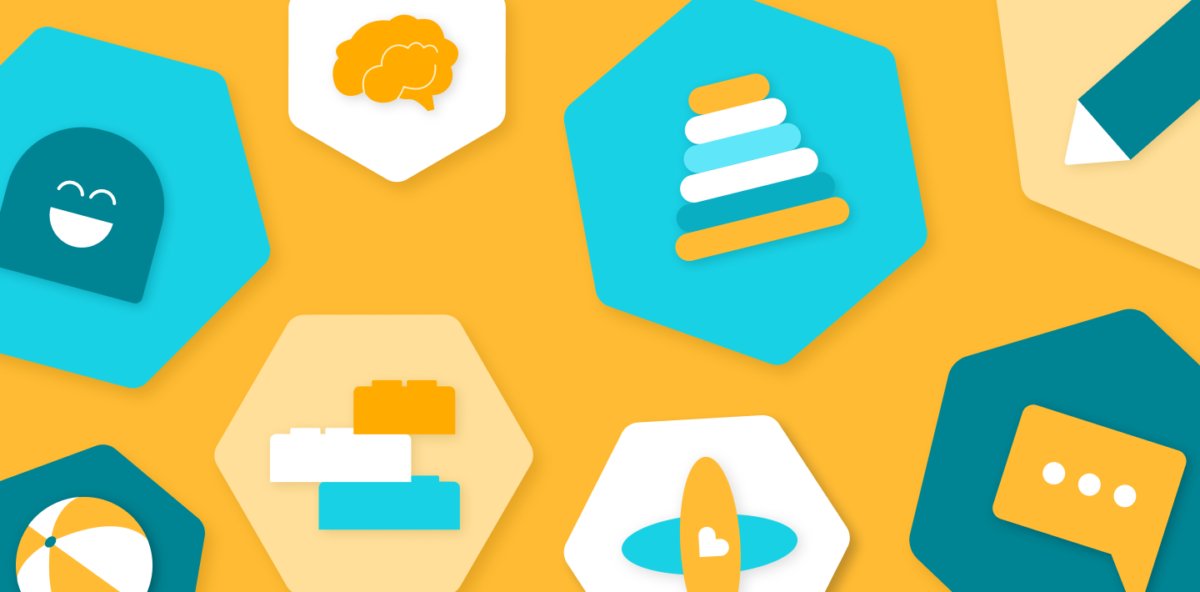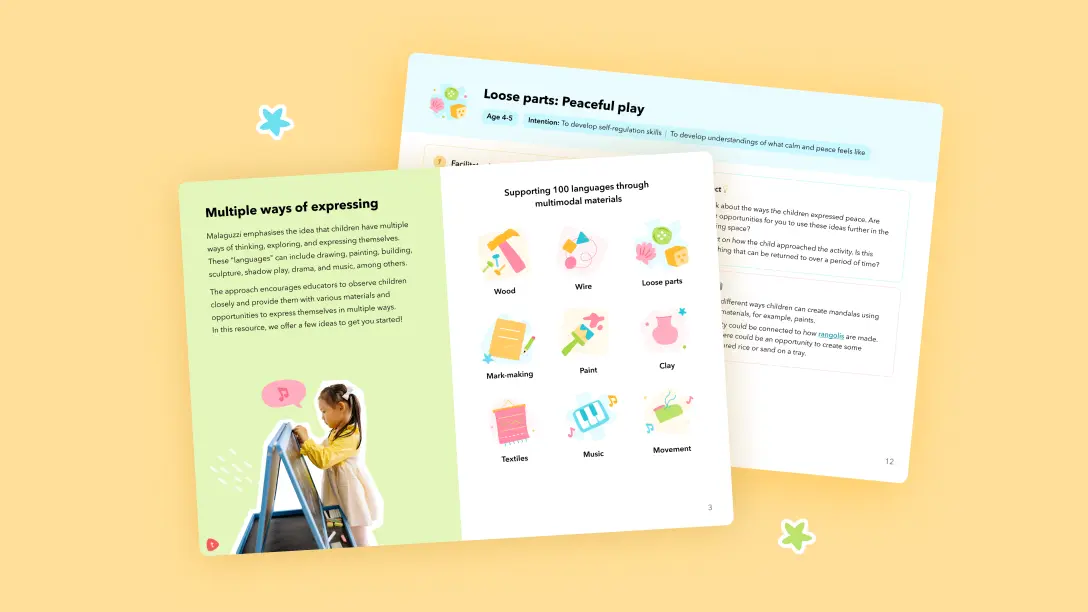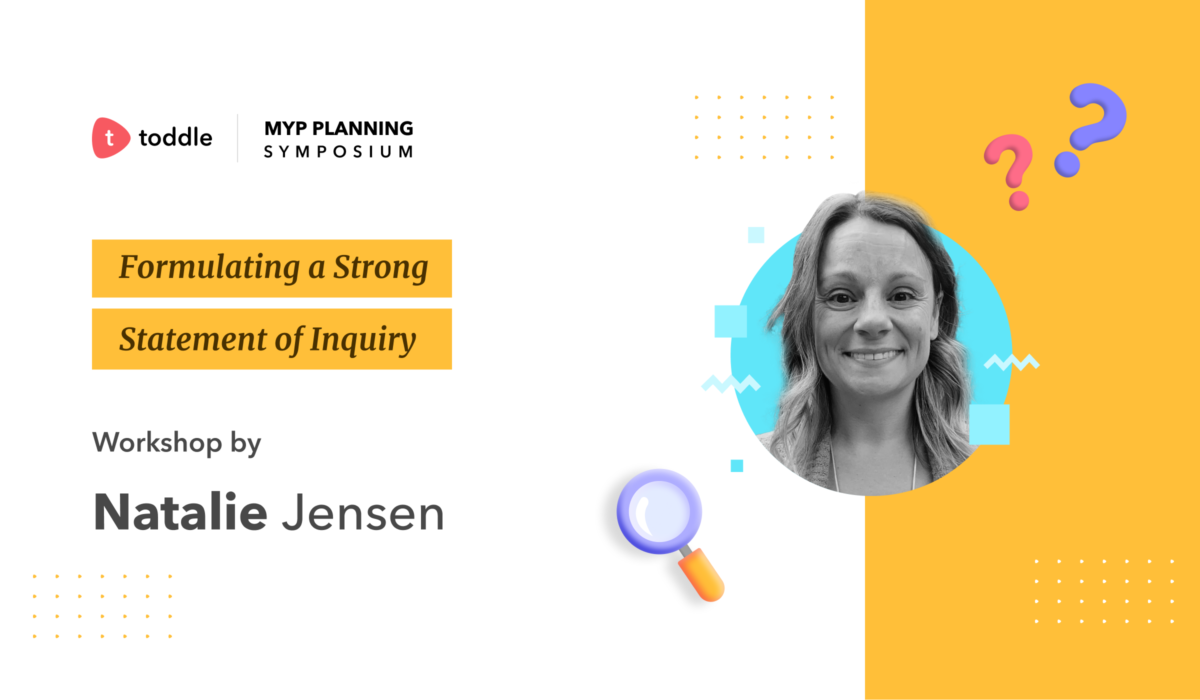As PYP teachers, we are constantly honing our practice. We view each day as an opportunity to refine our approaches, explore innovative teaching methods, and tailor our strategies to the unique needs of our students.
Now, consider how ChatGPT can seamlessly integrate into this journey, not only saving you time as an educator but also enhancing your understanding of the PYP. This guide is designed for you, the PYP educator or PYP coordinator looking to level up your practice using generative AI models like ChatGPT.

A PYP persona
Before interacting with ChatGPT, it is important to first generate a user persona, which in this case, is of a PYP teacher. Your persona gives ChatGPT relevant information it will need to develop personalized learning experiences and suggestions for your unit of inquiry. For this guide, we will use a basic PYP persona, but feel free to add:
- Additional teaching philosophies/beliefs
- Subject-specific information
- Subject curriculum standards or success criteria
- Key concepts, related concepts, and lines of inquiry
- LPA and ATL integration
PYP persona prompt:
You are a grade <grade level> PYP teacher. You are currently teaching a <length> unit under the theme <transdisciplinary theme>. The central idea for the unit is <central idea>. You are collaborating with <collaborating subjects>. Wait for the next prompt.
What are the Approaches to Teaching (ATT)?
The Approaches to Teaching (ATTs) in the IB are instructional strategies that enhance student learning. They reflect the IB’s beliefs on effective learning. The ATTs provide a practical framework for educators, promoting deep understanding, critical thinking, inquiry-based learning, interdisciplinary connections, and student engagement. They empower students to become lifelong learners ready to thrive in a dynamic world. There are six Approaches to Teaching (ATTs) identified by the IB:
1. Based on inquiry
2. Focused on conceptual understanding
3. Developed in local and global contexts
4. Focused on effective teamwork and collaboration
5. Differentiated to meet the needs of all learners
6. Informed by assessment
ChatGPT prompts for the PYP
We use the organizing structure of the IB Approaches to Teaching (ATTs) to explore how you might use ChatGPT to better understand and implement the PYP. The ATTs serve as anchors, framing your journey to create engaging, effective, and student-centric experiences. For each ATT, we provide a brief theoretical overview. Then, we provide you with take and use ChatGPT prompts you can use to put the ATT in action.
Approaches to Teaching 1: Based on inquiry
Inquiry sits at the heart of the PYP. As we design units of inquiry, our goal is to provoke genuine student interest and curiosity. An inquiry doesn’t truly begin until each student has a burning question they want to explore. ChatGPT can be an incredibly powerful tool to ensure that every student has a question they want to explore!
For more guidance on teaching using inquiry, check out our comprehensive inquiry guide.
Using ChatGPT to drive inquiry (ATT 1)
What ChatGPT is great at:
- Brainstorming interesting connections (to different subjects, student interests, or real life problems)
- Creating question banks
- Brainstorming problems for students to explore
Prompts to try: Based on inquiry
Provocations
Brainstorm five authentic learning experiences to help students tune into the unit. These learning experiences will kickstart the unit by being powerful provocations or “hook” engagements. The emphasis will be on exploring what students already know and helping them to form questions they want to explore. Make the learning experiences grade-appropriate, fun, and engaging for the students.
Question banks
Generate a list of interesting and creative questions written in student-friendly language. The questions should provide opportunities to explore the unit’s key concepts while digging deeper into disciplinary content knowledge. They should provide opportunities for interesting and new connections (for example, a unit on civilizations might have questions about health and medicine, beauty and makeup, or transportation).
Connect to student interests
A student is really interested in <area of interest> what are some ways this unit might connect to their area of interest? Generate a list of three research questions this student might want to explore.
Assess prior knowledge/interests
Design a simple pre-test I can use to assess prior knowledge of the unit as well as potential areas of interest.
Approaches to Teaching 2: Focused on conceptual understanding
A second key element of the PYP is its conceptual nature. Conceptual thinking moves us away from content and topic-driven teaching, and towards deeper, lasting understanding. However, planning and thinking conceptually can feel really difficult to do at the start. ChatGPT can be an incredible tool for building your proficiency with conceptual thinking.
In the PYP, the major concepts you use to plan are related concepts and key concepts.

Using ChatGPT to build conceptual understandings (ATT 2)
What ChatGPT is great at:
- Unpacking curriculum standards to find disciplinary related concepts.
- Finding interesting connections within and across disciplines
- Choosing and explaining overarching key concepts
It’s not so great at:
- Knowing your school’s chosen curriculum standards (you have to copy and paste them).
Prompts to try: Focus on conceptual understanding
Related concepts
Option 1 (copy and paste your standards for each subject): In <subject> you have selected the following curriculum standards as part of the unit <copy and paste your standards>. Help me to identify 3-5 disciplinary related concepts that connect the chosen curriculum standards to the unit’s big ideas and transdisciplinary theme. You should provide no more than one or two word concepts that are timeless, abstract, and universal. Present these as a bulleted list without a description of each concept.
Option 2 (don’t include your standards): Identify 3-5 related disciplinary concepts for each collaborating subject. These concepts should clearly show the connection between the discipline and the unit’s big ideas. You should provide no more than one or two word concepts that are timeless, abstract, and universal. Present these as a bulleted list without a description of each concept.
Key concepts
Based on the related concepts you have selected. choose the 3 best PYP key concepts (Form, Function, Causation, Change, Connection, Perspective, Responsibility, or Reflection) that provide the most opportunity for connection across subjects. Provide a brief description of why you selected each key concept.
Approaches to Teaching 3: Developed in local and global contexts
In the PYP, we have the freedom to design responsive and locally relevant curriculum. By connecting the learning to challenges and opportunities in their personal lives, local contexts, and global contexts, we help students to see the “why” behind what they learn. This fosters the understanding that we are all part of a global community and our actions make a difference. Students become internationally-minded. For example:
Living in Colorado, some unique connections I could make to a living things unit would be:
- The impact or causes of fires
- Water scarcity
- Preserving Colorado wildflowers
- The endangered Colorado wetlands
- Ute culture and beliefs
Using ChatGPT to integrate local and global contexts (ATT 3)
What ChatGPT is great at:
- Creating personal action plans
- Giving broad suggestions about local opportunities and challenges
- Seeing interesting connections
- Creatively brainstorming actions
It’s not so great at:
- Providing specific, local examples (this can be hit or miss)
Prompts to try: Developed in local and global contexts
Personal action
- Brainstorm personal actions students might take in their lives connected to this unit of inquiry.
- Brainstorm personal challenges or opportunities students might encounter in their lives connected to this unit.
- Brainstorm potential misconceptions that might occur in this unit as well as learning opportunities to challenge these beliefs.
- In the PYP, action can be demonstrated through participation, advocacy, social justice, social entrepreneurship and lifestyle choices – brainstorm potential students actions in each of these categories.
- Brainstorm student reflection questions around <learner profile> demonstrating how their thinking or actions have changed as a result of what they have learned.
Local action
- I live in <location> brainstorm specific local opportunities and challenges students might explore in our local community. Wherever possible, give examples of real places, people, or organizations for the inquiry.
- Why is this unit relevant for a citizen of <place>?
- Generate a list of local experts we might reach out to to interview for this unit.
- Brainstorm potential action students might take to contribute to a local opportunity or address a local challenge.
Global action
- Which UN SDG does this unit best connect with?
- Brainstorm some global opportunities and challenges students might explore. Wherever possible, give examples of real places, people, or organizations for the inquiry.
- Brainstorm local actions that have a global impact connected to this unit.
Approaches to Teaching 4: Focused on effective teamwork and collaboration
Collaboration is embedded in the culture of PYP classrooms and schools from top to bottom! From curriculum planning to assessment, our goal is to give students increasing agency over what and how they learn. This culminates in the PYP exhibition where students are responsible for planning their own learning and action using the PYP Framework. Our hope is that by developing the skills of learning, we plant the seeds for students to think of themselves as lifelong learners.
Using ChatGPT for effective teamwork and collaboration (ATT 4)
WhatChatGPT is great at:
- Brainstorming routines or protocols for working groups
- Breaking down step-by-step instructions
- Brainstorming creative ideas and solutions to problems
- Incorporating student interests and questions into lessons
Prompts to try: Focused on effective teamwork and collaboration
Co-constructing
- Brainstorm ways I can give students more ownership over co-constructing the curriculum.
- My students have expressed an interest in <interest or question> how can I meaningfully adjust the curriculum to prioritize this interest?
Assessment capability
- Brainstorm ways I can co-construct the success criteria for <overview of unit or project to be assessed>.
- Brainstorm a goal setting process students could use to create their own personalized goals around <success criteria>.
- <Overview of unit so far>. Create a set of reflection prompts for students to reflect on their progress so far and adjust their plan of action to meet the goals they have set.
Learning with and from others
- Brainstorm a list of community experts students might interview connected to this unit.
- Generate a list of questions students might ask their families to learn more about this unit.
- Generate a list of questions students might ask their friends or peers about this topic.
- Generate a self-reflection that will evoke students’ personal prior knowledge, skills, experiences, beliefs, and passions connected to this unit.

Approaches to Teaching 5: Differentiated to meet the needs of all learners
At its core, the PYP is a learner-centered model of instruction. Designing units of inquiry is not a one-size fits all approach. As we are planning a unit, we aim to develop instruction that is engaging, relevant, challenging, and significant.
Using ChatGPT to meet the needs of all learners (ATT 5)
What ChatGPT is great at:
- Recognizing potential barriers to learning
- Brainstorming creative strategies for making learning more accessible
- Problem solving
- Interpreting data, looking for patterns, and making suggestions
Prompts to try: Differentiated to meet the needs of all learners
Engaging
- What are some interesting research questions I might inquire into? Get creative, thinking about potential areas students would find interesting and engaging.
- How might I connect this unit to a student interested in <student interest>.
- Brainstorm potential provocations I could do with students to increase engagement and tap into prior knowledge. This might look like field trips, experiments, or engaging with interesting objects. Students should come away feeling curious. Include opportunities to reflect on prior knowledge/experiences and brainstorm potential questions.
Relevant
- What are some real life experiences <grade level> students might encounter connected to this unit?
- Create role play situations connecting real life problems or opportunities to the ideas in this unit.
Challenging
- I’ve noticed that some students are having difficulty with <overview of challenge>. Brainstorm potential support I could provide.
- How might I extend the learning for a student who is performing above expectations in <overview of student strengths and interests>?
- Students will be learning about <learning objective>. Brainstorm ways I can support learners in processing new information and making meaning.
Significant
- Our school is located in <location>. Brainstorm some local opportunities and challenges faced by our community connected to this goal. Get as specific as possible about resources or organizations students might be interested in. The goal is for students to be exposed to opportunities for meaningful action.
- Which UN SDG might this unit connect with? Brainstorm potential student actions connecting this unit to the selected SDG.
- Create a list of ways students could make the world a better place using what they’ve learned in this unit.
Approaches to Teaching 6: Informed by assessment
In PYP assessments, we value the process of learning over the final product. The goal of our assessments is to tell the story of learning- focusing on what was learned along the way and which strategies were most effective. Students are active partners in the assessment process, consistently contributing to the goal setting process and reflecting on what and how they learn.
Using ChatGPT to inform assessments (ATT 6)
What ChatGPT is great at:
- Brainstorming routines or protocols for working groups
- Breaking down step-by-step instructions
- Brainstorming creative ideas and solutions to problems
- Incorporating student interests and questions into lessons
Prompts to try: Informed by assessment
Measuring
- Generate a list of assessments to measure current understanding, prior knowledge, beliefs, and experiences connected to <success criteria>.
- Generate a set of reflection questions for students to reflect on their current level of knowledge, understanding, and skill connected to <success criteria>.
Monitoring
- Generate a choice board of three assessments to enable learners to review the goals they have previously set, reflect on their actions they have taken throughout the week, and regulate their next steps to achieve their goals connected to <success criteria>.
- How might I creatively assess <success criteria to be assessed>?
Documenting
- Create a continuous assessment plan for a <length> unit. For each week, provide an opportunity for students to reflect on their growth connected to their personal goals for <success criteria>.
- How might I document student progress towards <goal>?
Reporting
- You are creating a narrative report on a students’ current level of success on <success criteria>. Generate a set of comments using the scale <grading scale of the school>.
Conclusion:
Embracing ChatGPT as a PYP teacher will help you enhance your understanding of the PYP and elevate your teaching practice.
Use this guide to make your practice more aligned to the PYP Approaches to Teaching (ATTs). From sparking inquiry and fostering conceptual understanding to navigating local and global contexts, promoting collaboration, differentiating instruction, and informed assessment, you can use the strategies in this guide to craft engaging, effective, and student-centric learning experiences.














